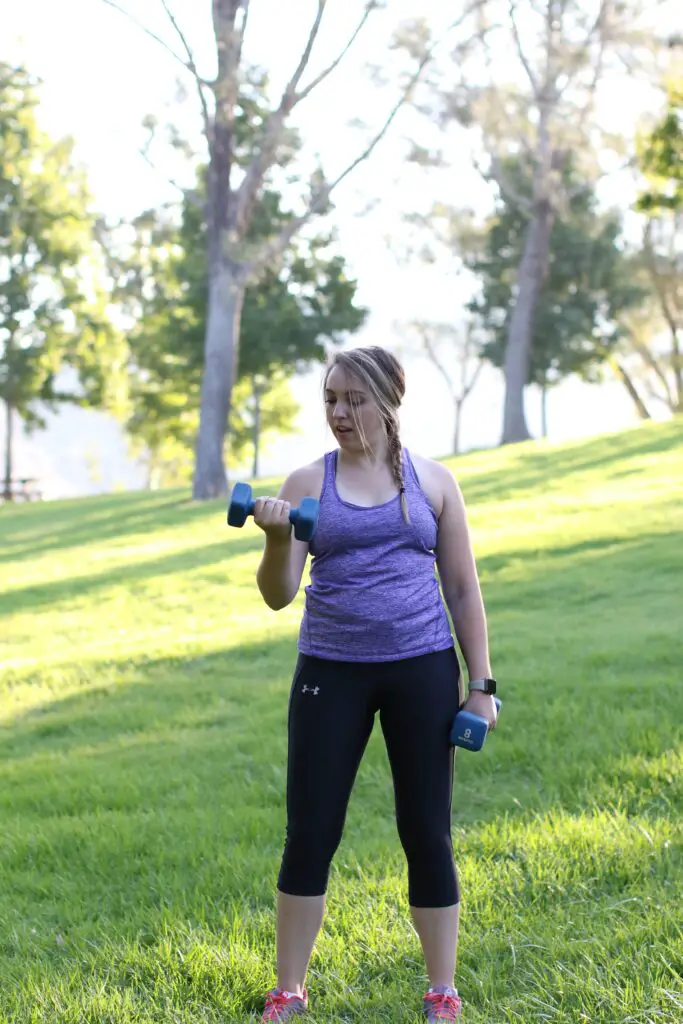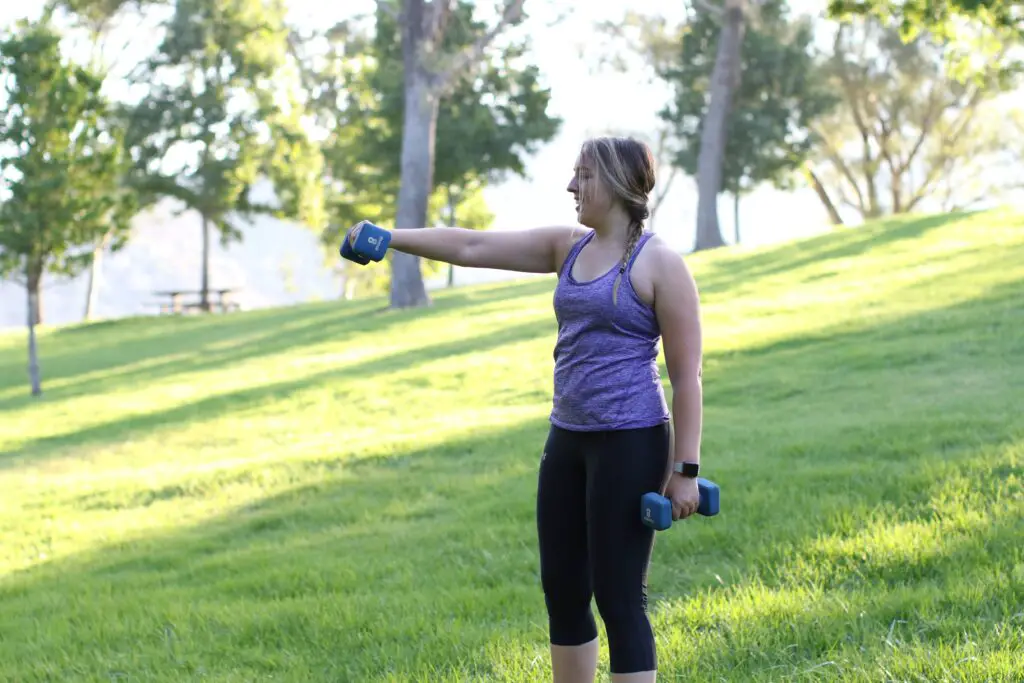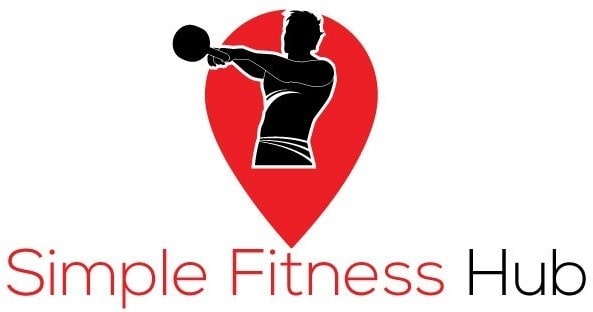When you’re talking about lifting weights, dumbbells are one of the first things that come to mind. However, dumbbells are not a matter of simply picking them up and start lifting. Learning how to lift dumbbells properly is crucial to really get in shape and work on your muscles without increasing the risk of injuries.
How to Lift Dumbbells Properly
Even an Average Joes can reap the benefits of weight training with just a couple of dumbbells and good technique. When done properly, lifting dumbbells can help you burn fat, get stronger, tone your muscles as well as improve your bone density. Follow these tips to improve your weight training program with a couple of dumbbells.

Warm Up First
Before you start lifting those dumbbells, it’s important that you warm up your body to avoid any injuries. Start off by doing some stretching and aerobic exercise for at least 5 minutes so your muscles loosen and heat up.
Make sure your arms are all warmed up. When you lift dumbbells without warming up may lead to muscle fatigue and even injuries.
Choose the Right Weight For You
Another thing that could lead to faster muscle fatigue and injury is starting off with the wrong weight. Too much weight will only give you fewer sets before tiring out while too lightweight dumbbells won’t target your muscles enough.
First, figure out how many reps you should do. If you’re doing bench presses, the recommended repetitions would be 3 or 4 sets so you will build muscles. For that, you will need a dumbbell weight that you can lift ranging from 10 to 20 reps before muscle fatigue sets in.
Lift Slowly
Being able to lift fast isn’t helpful for properly lifting dumbbells. In fact, slow and steady is the best workouts to maximize results. You don’t get to maximize the effects of lifting dumbbells properly with fast repetitions. You want to feel the weight of the dumbbell as you lift it up and down and make your muscles work with the utmost time.
It’s better to do fewer reps slowly and properly than doing it as fast as possible in the least amount of time. When you do slow rep workouts, your muscles are under tension more frequently compared to doing fast reps. A slower approach to strength training also helps beginners master the form properly.
Lifting dumbbells as fast as possible is recommended if you want to build strength and power instead of shaping your muscles. Getting a workout for at least an hour will greatly help your body so don’t rush into lifting dumbbells.

Cool Down
Once you’re done with your workout, you should do a cool-down routine. This will help relax and stretch your muscles after being put to work. Wearing the right workout shoes also prevents you from getting sore muscles the day after or general fatigue that might affect your workout lifestyle.
A cool-down routine also helps with lowering your heart rate and preparing your body to rest. Imagine a hot object being subjected directly to the cold surrounding. Basically our body is all heated up from workouts so it’s important to gradually decrease your body temperature so your body won’t experience any side effects.
Can I Lift Dumbbells Every Day?
According to the U.S Department of Health and Human Services, the recommended times to do strength-training workouts of major muscle groups is at least 2 times a week.
While you can adjust your workout routine so you will be able to lift every day, many experts recommend having at least one solid day of rest every week. If you have a heavy lifting workout load, you might even need more rest time. Consider that every muscle group in your body needs at least one day of rest between heavy workouts.
If you lift dumbbells too much you might experience muscle soreness which will affect your whole workout plan. Mild soreness after every workout is normal but when you do too much, it might go severe. Severe soreness is counterproductive as it sets back your workout routine so you can give time for your body to recover.
How Do I Know If I’m Lifting Weights Correctly?
There is no way to actually tell by yourself if you are lifting weights correctly unless you record yourself and check your form. You could possibly need the help of a fitness trainer or someone you know who is experienced in lifting weights to correct you.
However, there are things that you can see or feel to let you gauge if you’re doing it properly or not. If you’re not doing it properly, you will feel pain during or after lifting weights. There are also things that you have to follow if you want to correctly lift weights as much as possible;

Things to Do When Lifting Dumbbells
- Prioritize proper form over the number of sets: You will only get minimal results when you do it improperly. You don’t have to rush it as you will get stronger gradually and increase the sets.
- Use proper form: when lifting weights, move with the full range of motion in your joints. The proper form gives you better results and reduces the chance of getting injured. If you can’t maintain proper form, consider lowering the weight of your dumbbell.
- Breathe: don’t hold your breath when lifting dumbbells. Breath out when you lift the dumbbells and breath out as you lower them.
- Rest: if you can, avoid exercising the same muscles for two days in a row. It’s also important to give your body some rest so it will maintain its good condition.
Things to Not Do When Lifting Dumbbells
- Don’t go beyond: If you feel that you are at your limit, it’s best to stop and take a moment of rest before doing another set.
- Stop if you feel pain: if you are experiencing pain when lifting dumbbells, immediately stop. Let your body rest for a few days before trying again. Otherwise, it might be because of the improper form so you have to correct it.
Conclusion
Lifting dumbbells properly is important if you want to maximize your workouts. If you follow the things mentioned above, then you are a step closer to fulfilling your health and fitness lifestyle. Make sure you give your body enough rest and not overwork it out.
